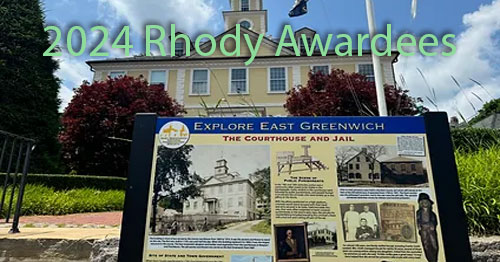
|
Fun Facts
Prophetess, Jemima Wilkinson (the Publick Universal Friend), established a meeting house in Frenchtown, located on what is now South County Trail.
[Category 1 (Public)]
Inscribed in the wall of the Eldredge House at the corner of Peirce and Division Streets are several Greek letters which translate to: "I was sick and ye visited me." This is a most appropriate line for the home of two of the town's most devoted physicians — Dr. Charles Eldredge and his son, Dr. James H. Eldredge
[Category 1 (Public)]
|
| © 2024 East Greenwich Historic Preservation Society | * Powered by EasyNetSites.com Webware * |



